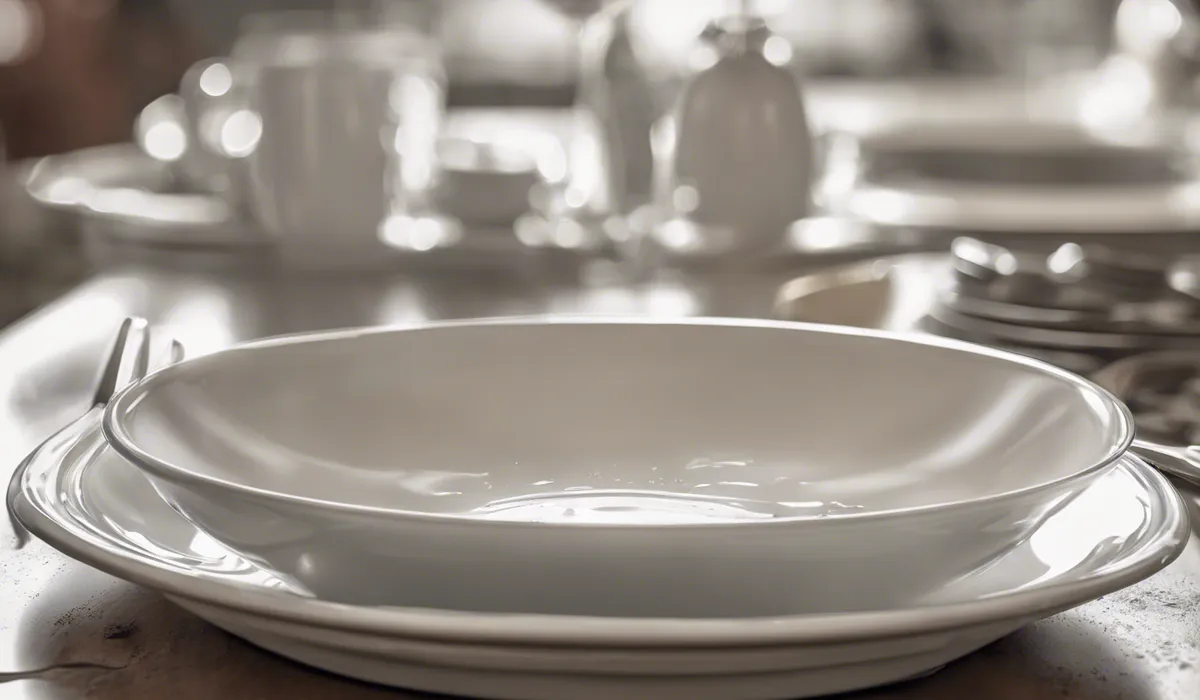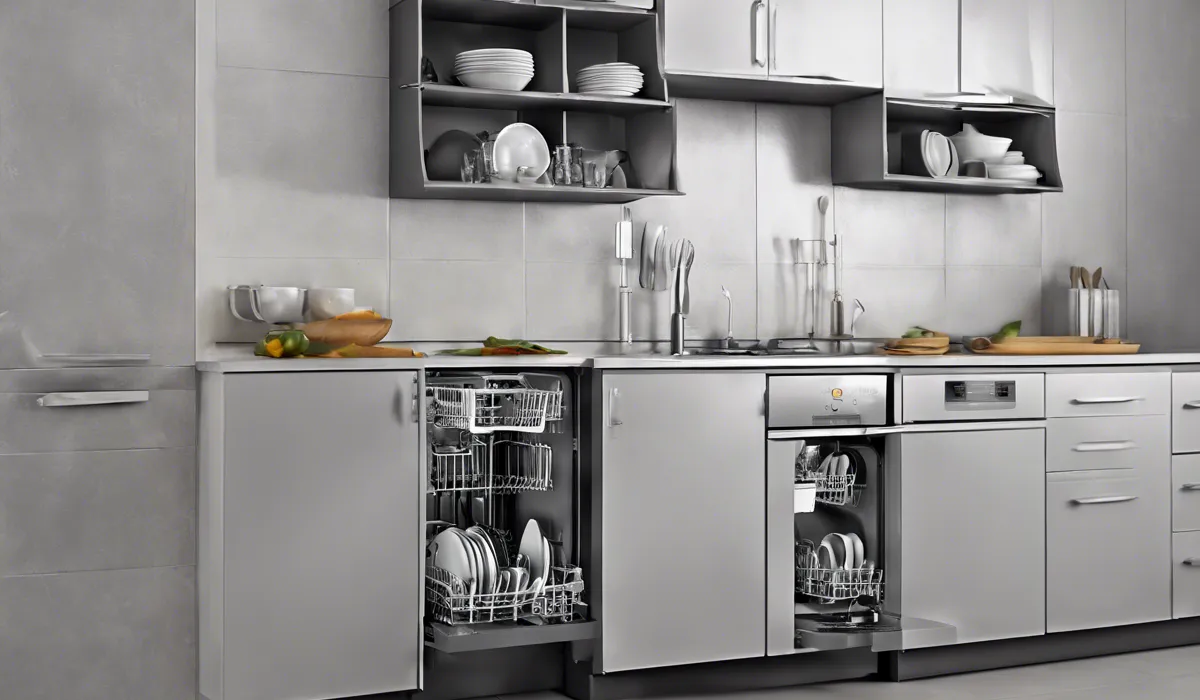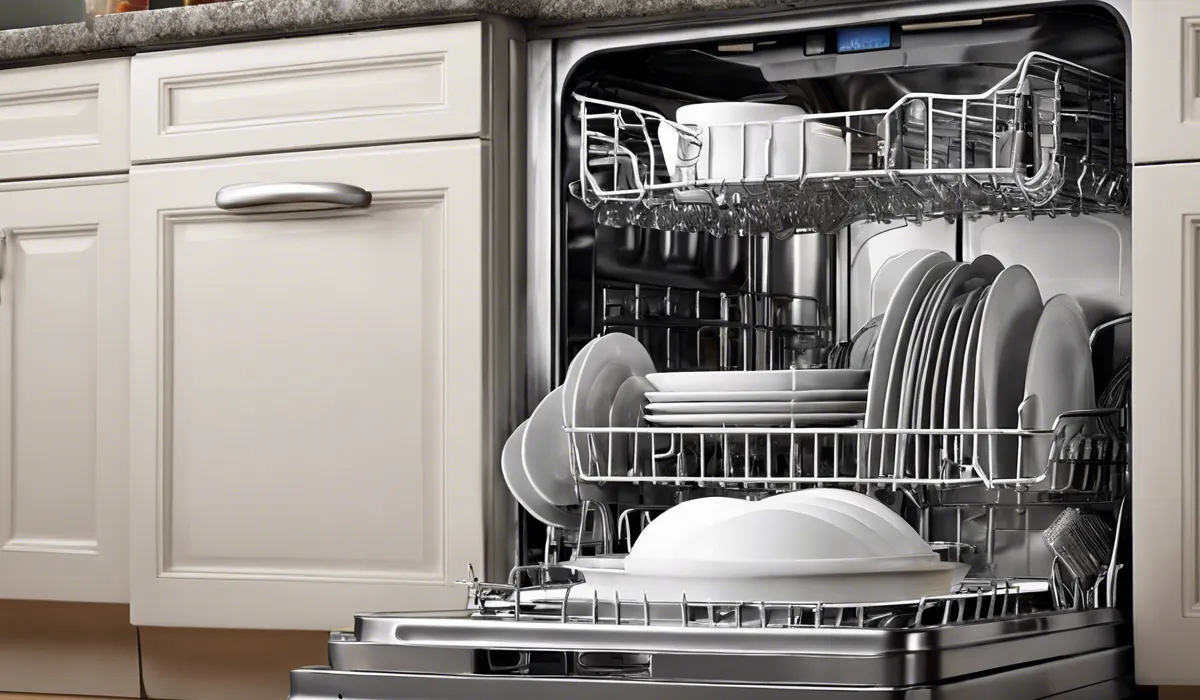How to Put Dirty Dishes in the Dishwasher: A Spotless Guide
To put dirty dishes in the dishwasher, scrape off food residue, place larger items on the bottom rack facing the spray arms, and set glasses and bowls on the top rack. Ensure that utensils are in the cutlery basket, handles down. Avoid overcrowding for effective cleaning.
Preparing the Dishes

Scraping Off Food Residue
Before placing dishes in the dishwasher, it is crucial to remove large food particles and debris. This step prevents clogging and ensures that the dishwasher can effectively clean the dishes.
Use a spatula or a paper towel to scrape off leftover food into the trash or compost bin. This simple action can significantly improve the performance of your dishwasher.
Pre-Rinsing When Needed
Some dishes may require a pre-rinse under the sink, especially if they have dried or sticky food on them. However, it’s not always necessary to pre-rinse, and in fact, many modern dishwashers are designed to handle a certain amount of soil.
Check the guidelines provided by your dishwasher’s manufacturer to determine if pre-rinsing is recommended for your model.
Following Manufacturer’s Guidelines
Each dishwasher is unique, and manufacturers provide specific recommendations for their models. It’s a good practice to check the user manual or the company’s website for any particular instructions on dish preparation.
This might include advice on the types of dishes that are dishwasher safe or how to handle heavily soiled items.
Organizing for Pre-Rinsing
If you do need to pre-rinse, organize your dishes by type. Place plates, bowls, and larger items together and glasses and cups separately.
This method saves time and water by allowing you to rinse similar items together and adjusting the water pressure accordingly.
Loading the Dishwasher

Bottom Rack Tips
For the bottom rack, start by placing the largest items like plates, pots, and pans. Ensure that they face the spray arms to allow water to reach all the surfaces. Avoid placing large items flat on the rack because they can block water and detergent from reaching other dishes.
Top Rack Tips
The top rack is best suited for lighter items, such as glasses, cups, and plastic containers.
Angle cups and glasses slightly to prevent water from pooling on the base. Be careful not to place items over the tines but rather between them to prevent breakage and ensure better cleaning.
Utensil Basket Loading
Utensils should be placed in the silverware basket with the handles down, except for sharp knives which should be placed with the handles up for safety.
Mixing spoons, forks, and knives prevent them from nesting together, which can hinder cleaning. Some dishwashers have individual slots for each utensil, which can be used for better cleaning results.
Spacing for Water Flow
Proper spacing between dishes is essential for water to circulate and reach all surfaces.
Overlapping plates or nesting bowls can create spots that won’t get cleaned. Try to leave a small gap between each dish to ensure optimal water flow and detergent access.
Avoiding Dishwasher Overload
While it might be tempting to fit as many dishes as possible into a single load, overloading the dishwasher is counterproductive.
An overcrowded dishwasher can result in poorly cleaned dishes and may even cause damage to the items. If necessary, wait until you have enough dishes for a full, but not overloaded, load.
Dishwasher Detergent and Cycle Settings

Choosing the Right Detergent
Selecting the appropriate detergent is vital for achieving clean dishes. There are various types of dishwasher detergents available, including powders, liquids, and pods.
Consider the hardness of your water and the type of dishes you are washing when choosing your detergent. Some detergents are specially formulated for hard water or for use with certain types of dishwashers.
Filling the Detergent Dispenser
Once you have chosen the right type of detergent, fill the dispenser according to the manufacturer’s instructions.
Be careful not to overfill, as this can lead to residue on your dishes. If you’re using a pod, place it in the dispenser or at the bottom of the dishwasher, as directed by the pod’s instructions.
Selecting the Wash Cycle
Dishwashers come with various cycle settings, from light wash to heavy-duty. Choose the cycle that best matches the soil level of your dishes.
For everyday loads with typical soiling, a normal cycle is usually sufficient. Heavily soiled items might require a more intense cycle. Some dishwashers even have sensor cycles that adjust the settings based on the load’s soil level.
Hard Water Considerations
If you live in an area with hard water, you may need to take extra steps to ensure your dishes come out clean.
Hard water can leave spots and film on dishes. Use a detergent that’s designed for hard water, or add a water softening agent to your wash cycle to combat these effects.
Using Rinse Aids
Rinse aids can be a game-changer for achieving spotless drying, especially if you have hard water.
They help water sheet off dishes more effectively, preventing droplets from forming and leaving spots. Fill the rinse aid dispenser following the manufacturer’s guidelines.
Starting the Dishwasher
After loading your dishwasher and adding detergent, you’re ready to start the machine.
Make sure the dishwasher door is closed securely and select the desired cycle. It’s a good practice to occasionally monitor the dishwasher for any issues, such as strange noises or leaks, especially if the dishwasher is new or has recently been serviced.
Throughout the process of preparing, loading, and setting your dishwasher, remembering these tips will help you achieve the best possible results.
With a bit of know-how and attention to detail, you can ensure that your dishes come out clean and ready for your next meal.
FAQs About Loading a Dishwasher
How do you prepare dishes before putting them in the dishwasher?
Scrape off food residue from dishes before placing them in the dishwasher to prevent clogging and ensure proper cleaning.
Where should large items be placed in the dishwasher?
Place larger items on the bottom rack of the dishwasher, making sure they face the spray arms for the most effective cleaning.
What is the correct way to load glasses and bowls?
Glasses and bowls should be placed on the top rack of the dishwasher to prevent damage and ensure they receive proper water flow.
How should utensils be loaded in the dishwasher’s cutlery basket?
Utensils should be placed in the cutlery basket with the handles facing down to allow for better cleaning and easier unloading.
What should be done to prevent overcrowding in the dishwasher?
Avoid overcrowding the dishwasher by arranging dishes with enough space between them, which allows for water and detergent to circulate effectively.
Final Thoughts
For optimal dishwasher use, pre-scrape dishes to remove food bits. Arrange larger items on the bottom rack, directed at spray arms, and place glasses and bowls on the top.
Store utensils in the cutlery basket with handles facing down. To ensure thorough cleaning, be mindful to not overcrowd the dishwasher.





